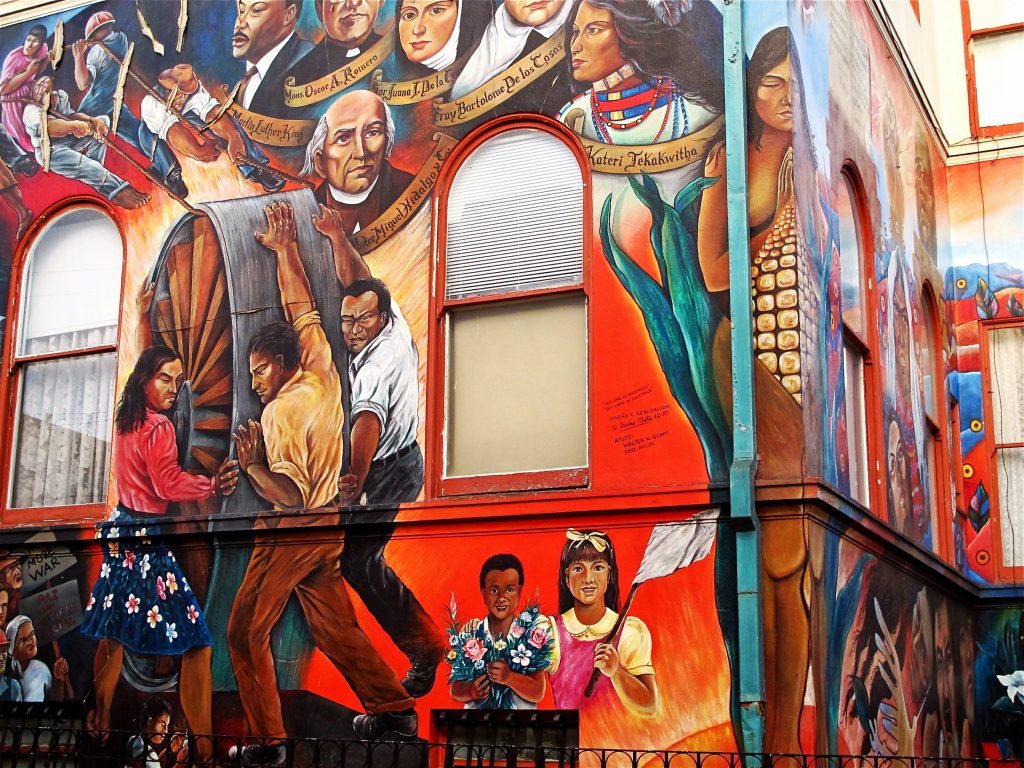What do we mean by a liveable city? Perhaps the sum of the factors that add up to a community’s quality of life: housing options, decent jobs, robust neighborhoods, mobility, vibrant public spaces, and affordability. But really, couldn’t that apply to any town, of any size? What makes a “city” so special? For me, it is the stimulating cultural life… Entertainment, enlightenment, recreation, inspiration—those things that help us step beyond the bounds of our day-to-day pragmatic existence and fire up our sense of possibility, collectively and individually.
Diversity plays a key role here. Through the eyes of San Francisco’s huge range of artists, for instance, I can experience radical differences among us and discover surprising affinities. I can imagine myself walking in different shoes, speaking a different language. Through art I can thrill to the beautiful or strange, surrender to the ridiculous, or struggle to comprehend the darkness. Art is the door to a million feelings, a cultural landscape that literally and spiritually brings people together. When we venture into foreign territory together, we bond. We share the same experience, we are on the same team. We cultivate empathy, and empathy is surely the deepest root of tolerance.

A dynamic cultural milieu (music + theater, to film and museums, spoken word, readings, dance and puppetry), also stands as a beacon of civic imagination. It functions as both a platform and a magnet for young people, visionaries and the creative class whose life choices have already had a huge economic impact on our country. As Richard Florida posits in The Rise of The Creative Class, “In the future, (this creative class) will determine how the workplace is organized, what companies will prosper or go bankrupt, and even which cities will thrive or wither.” We in the Bay Area have been ahead of the game. A strong generative population of artists has historically been key to the vitality and productivity of San Francisco.
The Arts thrive on a multiplicity of voices. Artists are nurtured by the unexpected—challenge is their meat and bread. The “identity” of a place generally has more to do with the quality and diversity of its cultural activities and services than with its economic or commercial functions. At the same time, a vibrant cultural sector and a good place for residents to “work, live and play” is, from an economic perspective, a good place for investment. Across the country, we can thank artists for revitalizing marginal urban areas and demonstrating the allure of a mixed community. They see potential, they renovate and they populate space with imagination. The presence of a diversified lifestyle and a variety of cultural choices has been shown to be a key driver of high economic performance.

The arts, and public artworks in particular, also contribute to thoughtfully-designed public space, creating enticing, accessible places where people want to meet and cultivate social connections, new and old. Public art and good urban design can also have positive economic spin-offs, creating landmarks that attract tourists and delight residents, thus assisting urban regeneration and contributing to branding and citizen loyalty.
The power of joy is that it is an inherently attractive force; rather than turning people away, it draws them together.
And let’s not forget pure pleasure! The power of joy is that it is an inherently attractive force; rather than turning people away, it draws them together. Joy in art can be used to highlight problems in a city in a way that invites people to participate in fixing them. A pop-up dance performance around a decaying building, a guerilla theater event in a seldom-used park or street art on a derelict wall can brighten a landscape that had been left devoid of color or nature. Today, rather than hasty murals completed under cover of darkness, the work of street artists is more likely to be recognized as a valuable contribution to the city’s cultural fabric. Witness the walls in San Francisco’s Mission District or the street iconography in Wynwood Florida. Public art contributes to a delightful shift of our perspective.

Perhaps most significant is that joy can help mitigate the isolation of modern urban life. By bringing our focus into the present moment in a positive way—small moments call us back to the world around us, reinvigorating our connection to our city and each other.
It is a given that human beings need meaning in their lives—and artists contribute directly to this need.
This article was originally written by Brenda Way and appeared on Impakter on December 6, 2018. You can read the full article on Impakter.



Leave a Reply